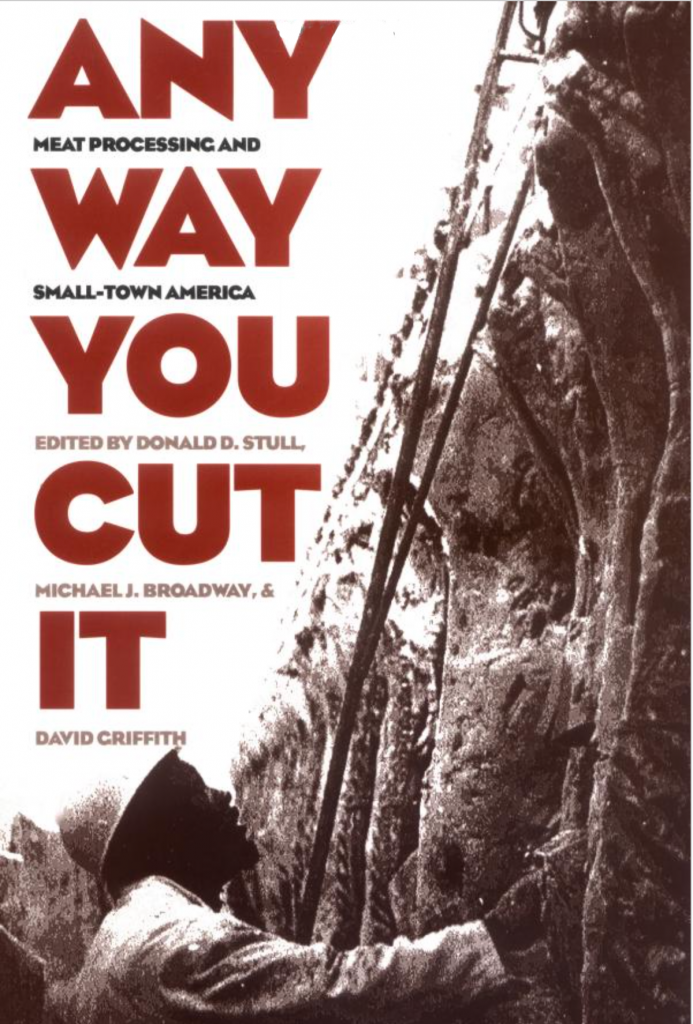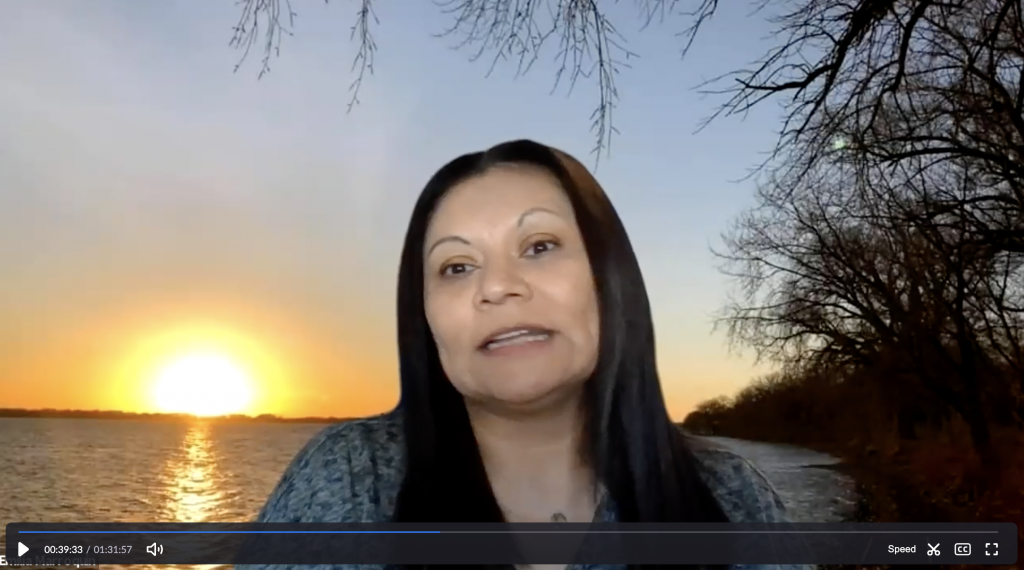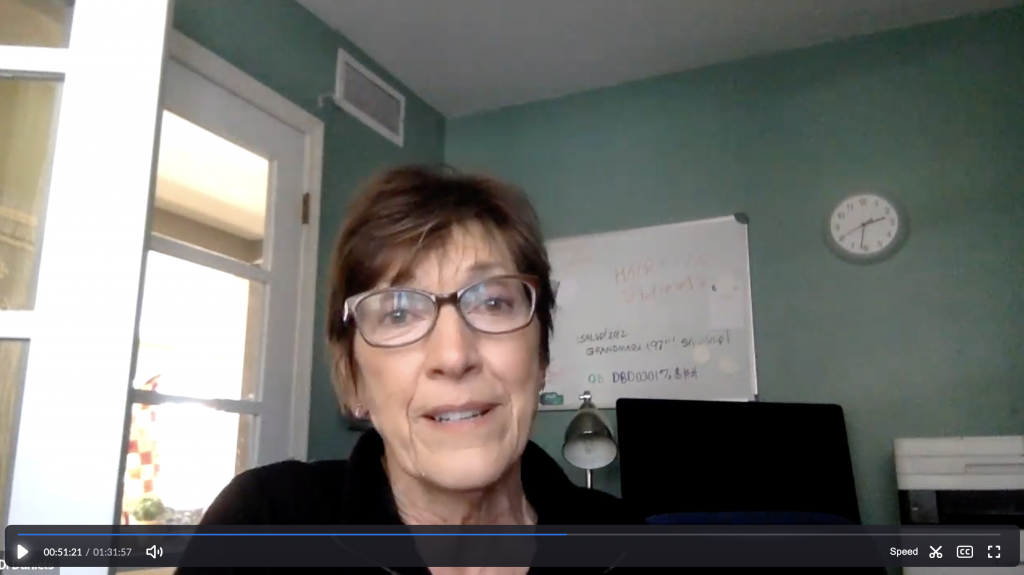by Logan Kelleher
More diversity in the workforce. Daycare options at Tyson. Increased housing in Storm Lake. Injuries on the job being swept under the rug. Topics like these arose in discussions with Fred Moore, former BVU president, and four board members from SALUD!, the Multicultural Health Coalition of Storm Lake.
While speaking to our guests took up the majority of our class time this week, we also discussed two materials to aid in our research: Any Way You Cut It: Meat Processing and Small-Town America, an edited collection of academic articles on the meatpacking industry in a national context, by Donald D. Stull, Michael J. Broadway and David Griffith; and a CNN Special Report, “The Hidden Workforce: Undocumented in America.”

Within the articles, the authors discuss the “dangerous nature of meat-processing work and call into question the packers’ commitment to safety” (67). One article in particular highlights the minimal change that has happened over time in the meatpacking industry: “reading and rereading The Jungle over the last six years, while studying beef packing and beef packing workers,” the authors write, “we have been struck with how little has really changed” (62).
Students agreed that these problems arise frequently, yet little is done to remedy them. While many of us believe that the meatpacking industry should be under pressure to solve these issues, we also recognize a lack of factors motivating change. The best thing going for the industry is that people need jobs, and will continue to work at various meatpacking plants as long as they can receive an income and are able to put food on the table.
We also focused on the inspections of plants throughout the region. “Industries have not been sufficiently vigorous in enforcing standards,” the authors write (64). According to them, meatpacking plants do not see their inspections completed at a high level. “For logical reasons, then, most American consumers choose not to be reminded of the ‘facts’ of the meat and poultry industry,” readers are reminded, “though their reasons are not necessarily in consumers’ best interests” (44). Although people know the problems associated with the meatpacking industry, the door tends to be kept closed on revealing issues to the public.
The risks are perilous, too. Many workers can get injured on the job, because the work can be tiresome and accompanied by movements with sharp objects. When workers do get injured, they receive little compensation for that injury. Hospital visits are rare. The companies would rather have first aid administered in the plant, putting a bandaid on a cut that otherwise needs stitches. Sometimes, workers are even cut by others’ knives nearby, due to the confined space and nature of the job. Immigrant workers not only risk daily injury, they also face not making enough money to live with financial comfort.
Our other material we discussed, the CNN investigation “The Hidden Workforce: Undocumented in America,” looked at immigrant workers in the agriculture industry. This video showed us how prevalent undocumented immigrants are in agriculture. An immigrant worker interviewed, who remains unnamed, talks about his experience, saying “I asked the person, ‘you need to pay us,’ and he told us ‘I know you are illegal’…’if you do something’…’you will be deported.’” Such farmers, and their employers, know that their jobs are among the few available without requiring proper documentation, so it is easier for the farmers to get away with paying them lower wages. But for these workers, even the smaller pay is worth it to eke out a living.
Wages and finances are in large part taboo to discuss, e.g., how much money people make or pay. This particular farmer in the CNN investigation resisted disclosing how much he was paying his immigrant workers. “Because when we say that we’re in dire need of more people to help us do the work and we talk about them being immigrants,” he said, “not a lot of people want to hear that.” The farmer could be either paying them close to what the workers in the Tyson meatpacking plant make, which is closer to $16 an hour, or they could be making well under the federal minimum wage.
Why doesn’t a union simply take over? If a union were to try to come into Storm Lake, for example, Tyson could stop any of the efforts in its tracks. It would be easy to replace the workers because the turnover rate is already high. If a company like Tyson had to deal with unionization in its plant, it would be an inconvenience only so long as it takes to hire more willing workers with fewer options. This is a “white” or “American privilege” that we discussed, where the advantaged population often assumes it can get better jobs than ones at Tyson or other businesses in the agriculture industry. Much of the immigrant population, on the other hand, sees these meatpacking plants as their best and sometimes only option.

As our discussions came to a close, we moved on to a first guest speaker for the class last week, a man whose job changed rapidly in his years in Storm Lake. Fred Moore, former president of Buena Vista University, served from 1995 to 2017, and therefore was a useful contributor to our class research. When he first moved to Storm Lake, Moore noticed quickly that it was not what he was used to. Growing up in the South, Moore noted that the diverse population he experienced had included African-Americans, but when he moved to Storm Lake he saw a larger mix of ethnicities and nationalities, a “global melting pot,” as he put it.
One of the things Moore spoke most highly of was that a student organization, Student MOVE (Mobilizing Outreach & Volunteer Efforts), continues to contribute greatly to the local community. He said that as a student body, BVU tallies in over 10,000 hours of community service in a year, a tremendous number for a school with a student body of around 1,546 students (2018-19).
An effort that Moore made with his time in the presidency was to see more diversity in new hires at the university. “A place where we started to do better was what we called the physical plant,” he said. “That would be facilities, housekeepers, maintenance.”
BVU does recruit from Storm Lake High School. It makes recruiting efforts at the school, and sees many first generation students, from both the recent immigrant population as well as Storm Lakers with deeper local roots. Regardless, many local students are going to college for the first time in their family. One of our classmates asked if the school sees the Presbyterian religious affiliation as a contributor to the students admitted, but Moore informed us that Catholic, Lutheran, and Methodist affiliated students have higher percentages of entry. “In that part of Iowa, the Catholic Church and the Lutheran Church are very prominent,” he said.
From a former professor to a former president of BVU, to former and current police chiefs, to the Storm Lake Local School District superintendent, our class has talked to many important members of the Storm Lake community. This past Wednesday, for the first time, we spoke with residents working on the ground to improve the lives and health of all Storm Lakers. Four board members of SALUD!, which “believes in collaboration rather than competition” and “serves the community by building community,” shared their stories with us, including Joanne Alvorez, Di Daniels, Emilia Marroquín, and María Ramos.

Each had a different journey to Storm Lake and to SALUD!, but all shared a common goal of working with the organization to create a better community. Daniels explained how the organization aspires to meet the needs of the population when they arise, on an ad hoc basis. In a light-hearted but insightful moment, Alvorez brought up that she was very hesitant at first to join the organization. “I actually avoided joining SALUD! for a few months because I was kind of assigned to it,” she said, “because it was the multicultural committee, and I was the only brown person at the place I was working.” However, Alvorez would be convinced to stay. “I knew [the organizers] from the community and just knowing that the people that were included in the coalition were people in my community, and people that I trusted, was super important to me and the reason I stayed.”

Ramos, born in Mexico and on the City Council of Storm Lake, brought up the number of health screenings that the organization has facilitated at places like Tyson. This leads to patient/worker peace-of-mind, to be aware of any potential health problems.
Marroquín spoke of how she moved to Storm Lake with her family after a friend told them about Tyson hiring, and how she has been active in the community since then. On the organization and its ability to address challenges, Marroquín said, “I don’t know all of [the needs in Storm Lake] because we discover those as we go. Sometimes we don’t know these things are happening. Right now needs are pretty obvious. Child care is a big need in the community. Housing is another big need.”
One student, Anna Rottenborn, mentioned that all of the board members of SALUD! are women, and asked if that is the primary target for the organization. Daniels told us that they do welcome men, but they want to create a safe space for women first and foremost. “I am very cautious about bringing immigrant women…alongside with men because there seemed to be this automatic submission to the male,” she said. “I want to make sure every woman feels safe saying what they want to say.”

Marroquín mentioned that the people who come to the meetings need to be committed to the organization, and the majority of the time that is the women in the community. There are men that do come to meetings with reasonable frequency, but the women tend to be the most committed.
Another question, raised by Dr. Offenburger, was one that was helpful to our research. He noted that some of the more important things that the organization has done were aimed at Tyson workers, and he asked if they believed that there were shortcomings in what Tyson was doing for its employees. The answer was a resounding yes. Alvorez believed that Tyson should be more focused on child care and housing, the former being a problem for hesitant parents who do not want to, or cannot afford to, leave their children at home or at other area daycares. She felt Tyson should take the initiative to help its employees in that way. And when Ramos was talking about the various things SALUD! has done for Tyson, the list was long. “We have done a bunch of different types of screenings at Tyson: hypertension, BMI, diabetes…We had done a healthy activity that was called ‘Sunday Funday’ and invited local health centers to come in and do blood pressure and diabetes checks.”

Daniels also spoke about previous times when SALUD! has called out Tyson for these shortcomings, but because it is such a large employer, it is hard to make change on a grand scale. Housing availability may be one discrete issue that needs to be addressed in Storm Lake, yet larger, more general challenges, like racism, remain. Little by little, meeting by meeting, SALUD! leaders and others in town are working to find–to create–a sense of community.
Logan Kelleher is a junior history major and enjoys learning about Native American history. After graduating from Miami, Logan plans to attend law school and concentrate in environmental law. On campus, he is involved with the Amicus Curiae Pre-Law Society, where he serves as the Vice President of Programming, and is a member of the Miami University Men’s Glee Club.

